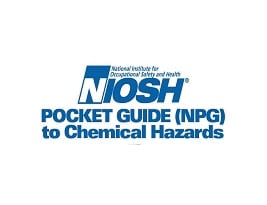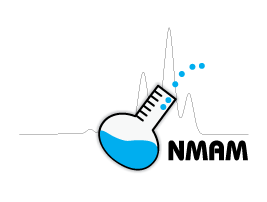Trichloroethylene

Overview
Trichloroethylene (CICH=CCl2) is a colorless liquid with a chloroform-like odor. Trichloroethylene may cause irritation to the eyes and skin. Exposure to high concentrations can cause dizziness, headaches, sleepiness, confusion, nausea, unconsciousness, liver damage, and even death. Trichloroethylene is a known carcinogen. Workers may be harmed from exposure to trichloroethylene. The level of exposure depends upon the dose, duration, and work being done.
Trichloroethylene is used in many industries. It is mostly used as a solvent to remove grease from metal parts, but it is also an ingredient in adhesives, paint removers, typewriter correction fluids, and spot removers. Some examples of workers at risk of being exposed to trichloroethylene include the following:
- Workers who use this substance for metal degreasing
- Workers who use it as an extraction solvent for greases, oils, fats, waxes, and tars
- Factory workers in the textile processing industry who use it to scour cotton, wool, and other fabrics
- Dry cleaning workers who use it to remove spots
- Factory workers in plants that manufacture pharmaceuticals
- Chemical workers who use it to make other chemicals
NIOSH recommends that employers use Hierarchy of Controls to prevent injuries. If you work in an industry that uses trichloroethylene, please read chemical labels and the accompanying Safety Data Sheets for hazard information. Visit NIOSH’s page on Managing Chemical Safety in the Workplace to learn more about controlling chemical workplace exposures.
The following resources provide information about occupational exposure to trichloroethylene. Useful search terms for trichloroethylene include “ethylene trichloride,” “TCE,” “trichloroethene,” and “trilene.”
NIOSH Chemical Resources
Related NIOSH Resources
- NIOSHTIC-2 search results on trichloroethylene—NIOSHTIC-2 is a searchable database of worker safety and health publications, documents, grant reports, and journal articles supported in whole or in part by NIOSH.
- Trichloroethylene, Trichloracetic acid in urine (No. 8322) —Sampling and measurement from NMAM, 4th ed.
- Trichloroethylene, Organic & inorganic gases by extractive FTIR spectrometry (No. 3800) —Sampling and measurement from NMAM, 4th ed.
- Immediately Dangerous to Life or Health (IDLH) Value Profile: Trichloroethylene—NIOSH reviews relevant scientific data and researches methods for developing IDLH values.
- NIOSH Worker Health Study Summaries—NIOSH conducts research to prevent illnesses and injuries in the workplace. The NIOSH Worker Notification Program notifies workers and other stakeholders about the findings of these research studies.
Selected Publications
- NIOSH skin notation (SK) profile: Trichloroethylene (TCE) [CAS No. 79-01-6]—DHHS (NIOSH) No. 2017-192.
- Preventing hearing loss caused by chemical (ototoxicity) and noise exposure—NIOSH DHHS No 2018-124.
- NIOSH Criteria Documents: Special Occupational Hazard Review With Control Recommendations: Trichloroethylene—DHHS (NIOSH) Publication No. 78-130 (1978) The purpose of Special Occupational Hazard Reviews is to analyze and document the health problems associated with a given agent or industrial process and to recommend engineering controls and work practices to ameliorate these problems
- Current Intelligence Bulletin 2: Trichloroethylene (TCE)—DHHS (NIOSH) No. 78-127 (1975) Presents information about Trichloroethylene as well as recommendation to treat formaldehyde as a carcinogen.
- NIOSH Criteria Documents: Criteria for a Recommended Standard: Occupational Exposure to Trichloroethylene—DHHS (NIOSH) No. 73-11025 (1973) Presents a standard to prevent the adverse effects of exposure to Trichloroethylene over a working lifetime.
- Occupational Safety and Health Guideline for Trichloroethylene—This guideline helps stakeholders conduct effective occupational safety and health programs.
Related Resources
- ATSDR Medical Management Guidelines: Trichloroethylene
- ATSDR – ToxFAQS: Trichloroethylene
- ATSDR Toxicological Profile for Trichloroethylene
- EPA Chemistry Dashboard
- EPA Acute Exposure Guideline Levels: Trichloroethylene
- EPA Air Toxics: Trichloroethylene
- EPA Drinking Water: Trichloroethylene
- EPA Integrated Risk Information System: Trichloroethylene
- NLM Hazardous Substance Data Bank: Trichloroethylene
- NLM Haz-Map: Trichloroethylene
- NLM Household Products Database: Trichloroethylene
- NTP Report on Carcinogens Twelfth Report-2011: Trichloroethylene
- OSHA Sampling Information: Trichloroethylene
- OSHA Hazard Communication
- New Jersey Hazardous Substance Fact Sheets: Trichloroethylene
International Resources
- Canadian Centre for Occupational Health and Safety (CCOHS): Trichlorethylene
- European Chemicals Agency (ECHA): Trichloroethylene
- Gestis Substance Database
- ILO International Chemical Safety Cards: Trichloroethylene
- IARC Monographs (Vol 106): Trichloroethylene
- IARC Monographs (Vol. 63): Trichloroethylene
- OECD Global Portal to Information on Chemical Substances
- WHO Environmental Health Criteria 50: Trichloroethylene



